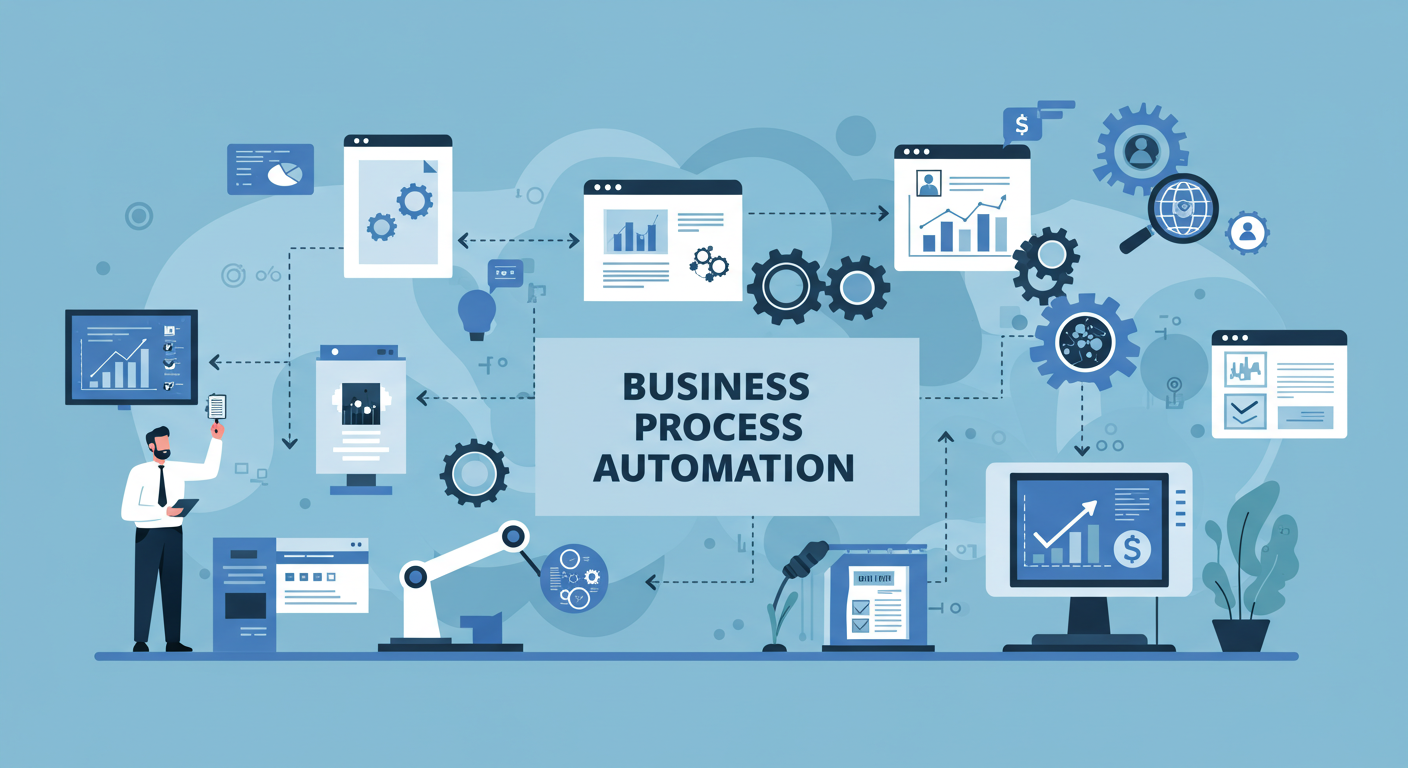What is Business Process Automation?
Business Process Automation (BPA) refers to the use of software and technology to automate complex, repetitive business tasks and processes. The primary objective of BPA is to streamline day-to-day operations, improving efficiency, reducing human error, and enabling employees to focus on higher-value, strategic activities.

Key Elements of Business Process Automation
BPA involves automating the tasks that form part of a larger business process. These tasks often span multiple departments and systems, including functions like order processing, customer management, HR onboarding, and finance operations. By automating such processes, businesses can improve both speed and accuracy, resulting in a more efficient and productive work environment.
For example, BPA can automate inventory management by tracking stock levels, generating purchase orders, and updating product information. This allows employees to focus on more complex tasks while ensuring the process runs smoothly.
The Technology Behind BPA
Business Process Automation integrates various technologies to automate workflows and tasks. These include:
- Robotic Process Automation (RPA): Automates simple, rule-based tasks like data entry or transferring information between systems.
- Workflow Automation: Automates the entire sequence of tasks within a business process, ensuring that activities are performed in the correct order.
- Artificial Intelligence (AI) and Machine Learning (ML): Used in more advanced BPA systems to handle unstructured data, make predictions, and adapt to changing conditions over time.
- Cloud Platforms: Many BPA solutions are cloud-based, offering scalability and centralized access to automated processes.
BPA solutions are typically tailored to meet the specific needs of a business, integrating with existing IT systems and applications via APIs to ensure seamless operation across departments.
How Does BPA Work?
BPA works by automating predefined workflows within business processes, eliminating the need for manual intervention. The automation software triggers a sequence of actions based on pre-set rules and triggers, ensuring the process is executed consistently and accurately. For example, a BPA solution might automatically approve invoices once they match purchase orders, eliminating the need for manual review.
Common Examples of Business Process Automation
BPA is applied across various business functions, improving processes that are repetitive, time-sensitive, and prone to human error. Some common applications of BPA include:
- Human Resources: Automating employee onboarding, document submission, and access setup.
- Customer Service: Automating responses to common customer queries or ticket routing.
- Finance: Streamlining invoicing, accounts payable, and purchase order approvals.
- Sales and Marketing: Automating lead generation, email campaigns, and customer follow-ups.
Benefits of Business Process Automation
The adoption of BPA brings several benefits to organizations:
- Increased Efficiency: By automating routine tasks, businesses can achieve faster turnaround times and reduce delays caused by manual processes.
- Cost Savings: BPA helps to reduce operational costs by eliminating inefficiencies and minimizing the need for human involvement in repetitive tasks.
- Improved Accuracy: Automated processes are less prone to errors compared to manual tasks, ensuring higher accuracy and reducing the risk of costly mistakes.
- Scalability: Automated processes are easier to scale as the business grows, supporting higher volumes of work without requiring significant increases in staff or resources.
- Better Compliance: BPA helps organizations maintain consistent processes, improving adherence to regulatory requirements and internal policies.
Summary
Business Process Automation offers significant advantages for businesses looking to streamline operations, improve productivity, and reduce costs. By integrating BPA technologies such as RPA, AI, and cloud-based solutions, organizations can automate complex workflows, allowing employees to focus on strategic, high-value tasks. With proper implementation and continuous monitoring, BPA can transform the way businesses operate, leading to long-term growth and success.